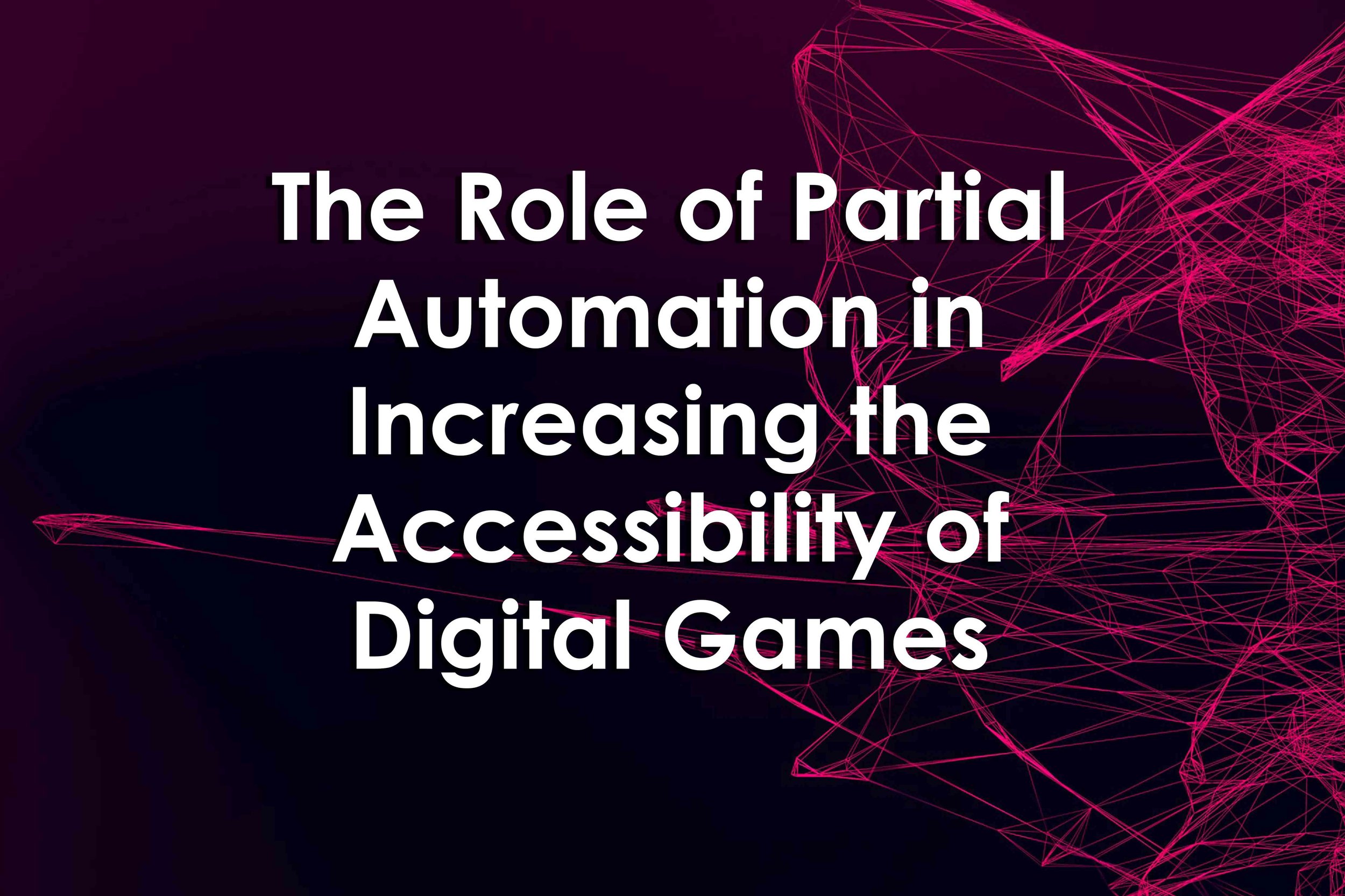The Role of Partial Automation in Increasing the Accessibility of Digital Games
The Role of Partial Automation in Increasing the Accessibility of Digital Games
The Role of Partial Automation in Increasing the Accessibility of Digital Games
By Gabriele Cimolino, Sussan Askari, and T.C Nicholas Graham
Abstract
“Digital games are designed to be controlled using hardware devices such as gamepads, keyboards, and cameras.Some device inputs may be inaccessible to players with motor impairments, rendering them unable to play.Games and devices can be adapted to enable play, but for some players theseadaptations may not go farenough. Games may require inputs that some players cannot provide with any device. To address this problem, we introduce partial automation, an accessibility technique that delegates control of inaccessible game inputsto an AI partner. Partial automation complements and builds on other approaches to improving games’ accessibility, including universal design, player balancing, and interface adaptation. We have demonstratedpartial automation in two games for the rehabilitation of spinal cord injury. Six study participants with vastlydifferent motor abilities were able to play both games. Participants liked the increased personalization thatpartial automation affords, although some participants were confused by aspects of the AI’s behavior.”
Reference
Cimolino, G., Askari, S., &; Graham, T. N. (2021). The role of partial automation in increasing the accessibility of digital games. Proceedings of the ACM on Human-Computer Interaction, 5(CHI PLAY), 1-30. doi:10.1145/3474693 https://dl.acm.org/doi/abs/10.1145/3474693
Keyword
Computer games, game accessibility, personalization, automation, shared control, artificial intelligence, research

